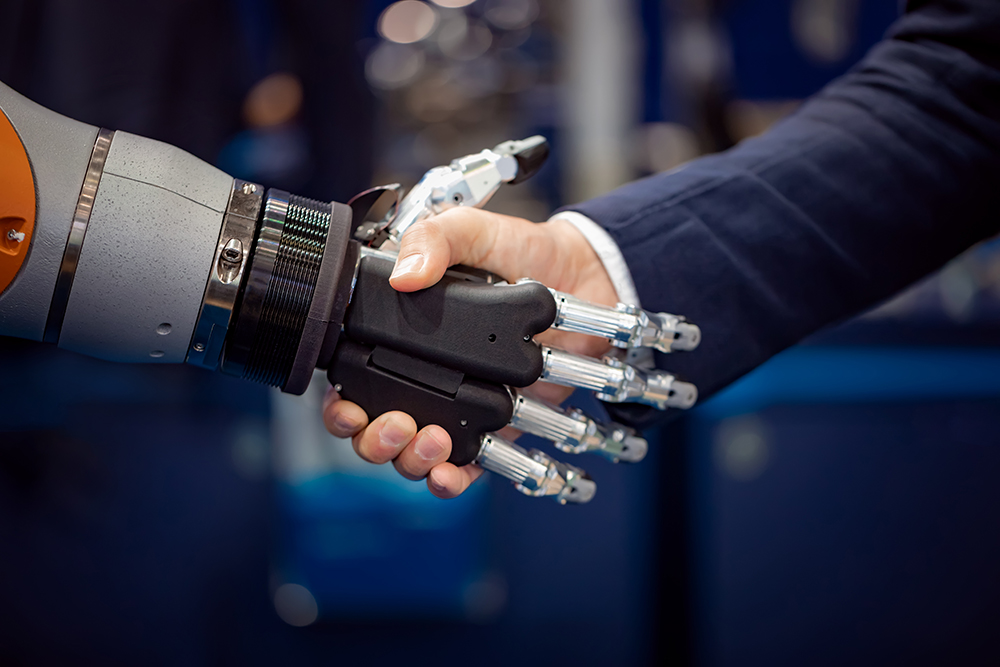There was a time when our television screen came alive with human-like robots performing the most outrageous of stunts, while tales of machines taking over the world took our imaginations far away, bringing to life the concept of artificial intelligence (AI).
Chances are you’ve read about AI as a technology, transforming our every walk of life from how we communicate, work and function as a society. The impact of it is already being felt far and wide, from retail to manufacturing, health to banking and just everything in between. One of the main things to remember here is, there are two main elements to this, artificial intelligence and machine learning.

Our television screens came alive with human-like robots performing the most outrageous of stunts, bringing to life the concept of artificial intelligence.
Artificial intelligence refers to the ability of a program or machine to ‘think’ like a human and imitate behaviour, and its systems are usually used to analyse, assimilate and use data to obtain more information.
Machine learning, on the other hand, is “a field of study that gives computers the ability to learn without being explicitly programmed’ as noted by Arthur Samuel when he coined the definition in 1959. It is a field in AI that reconstructs the idea that systems can learn from collections of data, and proceed to make decisions void of human participation.
Let’s dive down into how AI impacts businesses and how it is important to look at AI through the lens of its capabilities to benefit and bring about change that has never been seen before. More than anything, AI is said to be the biggest cost and time saver, because it simply automates and optimises routine processes and daily tasks. Regardless of what kind of business you find yourself in, the vast amount of data and the complexity of customers’ wants and needs can absolutely benefit from the technology.
However, venturing into this side of things can be daunting when technology is evolving as fast as ever, and everyone is jumping on the bandwagon all at once in order not to be left behind. Here are some easy steps you can take to begin integrating AI into your businesses:
1. “Research is formalized curiosity. It is poking and prying with a purpose.” - Zora Neale Hurston
Research, research, research. Some simple reading on what AI can and cannot do makes for a great start as it is vital that you know exactly how AI can help accelerate your business. For example, if you are in the manufacturing business, you would want to know how the implementation of AI can help troubleshoot any bottleneck processes or spot and fix any equipment inefficiencies immediately.
2. “A problem well stated is a problem half solved.” - John Dewey
Figuring out what problems need solving is the second most important step, rather than just opting to utilise every app out there. Ask yourself, what are some of the main outcomes would you like to see, and what obstacles are in the way of achieving them? How will you measure success and what is the current data you have or what else do you need to be even more successful? Looking at these questions will help make things clearer and help you make an informed decision.

Figuring out what problems need solving is the second most important step, rather than just opting to utilise every app out there
3. Surging towards success with internal capabilities
Prioritising objectives within the given time frame you have makes all the difference in the world, this will help you as a business owner to decide on what approach works better. Should you build a new solution? Buy a technology that is ready-made and off-the-shelf? Collaborate with a partner to develop an AI project or outsource the whole thing? Be mindful of the cost and budget your company has for this as well, and find a product that is best suited for your needs.
4. Strategic advisers for excellence
Look within your team. If you have high-skilled developers, it is most possible for them to actually build something in-house. Still, consulting with a domain specialist can be truly helpful. Always remember that developing AI for your business is not the same as building a typical software. It involves much more skills in building algorithms that will teach machines to work quicker and with improved efficiency. If in doubt, outsource the development specialising in big data, machine learning and AI.
5. When you have more data, you win
High-quality and clean data is an absolute must, but what does that mean? Collect data that is authentic and be as detailed as possible, free from jumbled information, and will be useful for an algorithm. Always bear in mind that algorithms only work when you are clear on what you want to achieve and you have examples of algorithms in hand. So, make sure to invest in the quality of your data but remember to keep them secure and safe.
6. Taking the giant leap!
Be selective in where you use AI. It is not meant for you to throw it all into every project and it’s more important for you to start small. Find a small dataset, use AI to monitor and value the outcome. Then begin rolling it out strategically with the support of your team. As time progresses, you can start shifting to bigger, more ambitious projects and monitoring closely if the program or technology chosen fits well.

Be selective in where you use AI, it is not meant for you to throw it all in into every project start small.
So now that we know what to do and where to look for, there is rarely ever a need to look outward as there are many home-grown solution providers that can provide top-notch solutions, like the innovation arm of Telekom Malaysia Berhad’s, TM Research and Development (TM R&D) team.
One of its main solutions was developed with an aim to benefit businesses in optimising their frontliners. The Single Platform on Intelligent Customer Experience or SPICE.ai, aims to assist frontliners in their daily task of addressing customer service enquiries and requests.
SPICE.ai consists of multiple components that cover different parts of an existing customer experience system. By integrating these components, frontliners gain a more holistic view of each customer’s profile. The award-winning solution then implements real-time analytics to improve customer experience, giving frontliners the right information at the right time which allows them to deliver a better experience to customers.
This analytics system has been deployed nationwide for nearly two years and becomes the primary touchpoint for more than 5,000 TM frontliners in most customer interactions across multiple channels. The performance of SPICE.ai has proven to be reliable and seamless even when integrated with more than 20 existing, standalone systems and was still able to relay the processed information through one single platform, on top of providing analytics and advisory.
About TM R&D
Established in 2001, TM R&D is the innovation arm for TM Group focusing on creating smarter ecosystems to make business and life easier for a better Malaysia. TM R&D’s solutions are clustered around four (4) pillars namely Intelligent Platforms, Data Brokerage, Connectivity/Tools and IR4.0/Digital Solutions. Growing from strength to strength since 2016, TM R&D has won multiple global awards and generated more than 2,800 Intellectual Property Rights (IPRs) and 1,400 digital assets to date. TM R&D’s innovations are all developed in-house and cut across multiple verticals such as Utilities, Retail, Agriculture, Healthcare and Education with safety and productivity as the top priority.
For more information about TM R&D and its innovations, visit www.tmrnd.com.my or email your inquiry to business@tmrnd.com.my or follow them on LinkedIn (TM Research & Development) for more news and updates.

